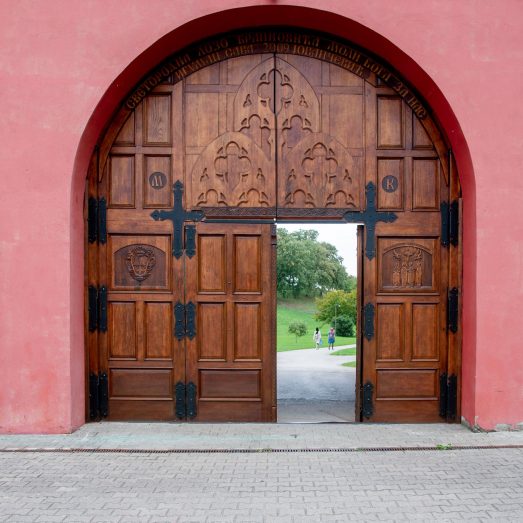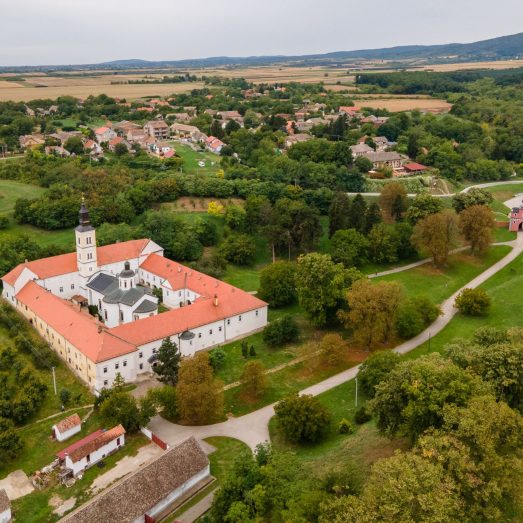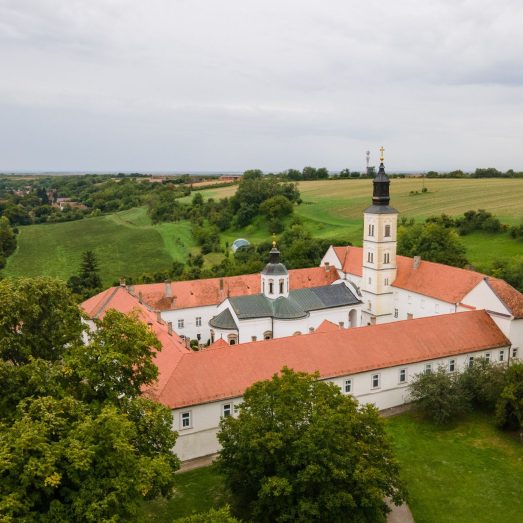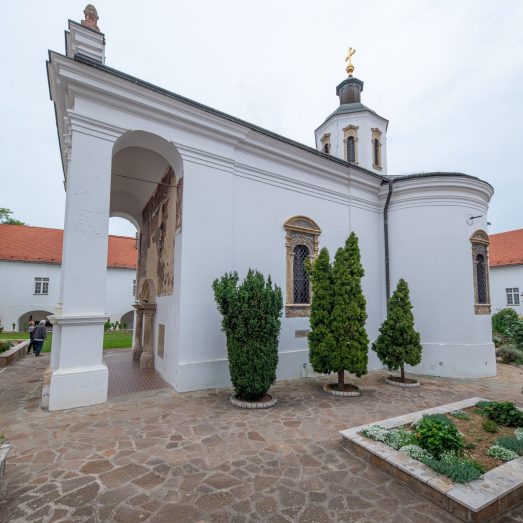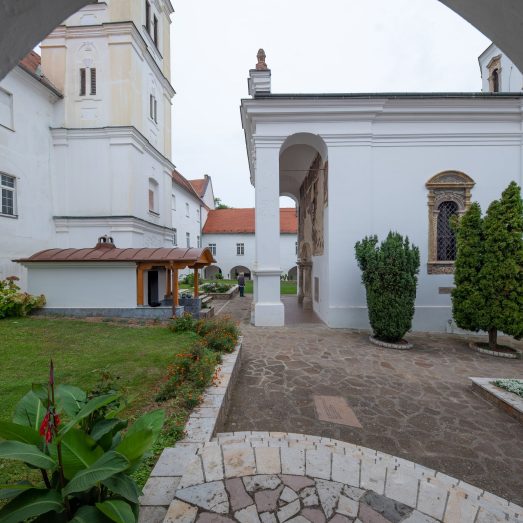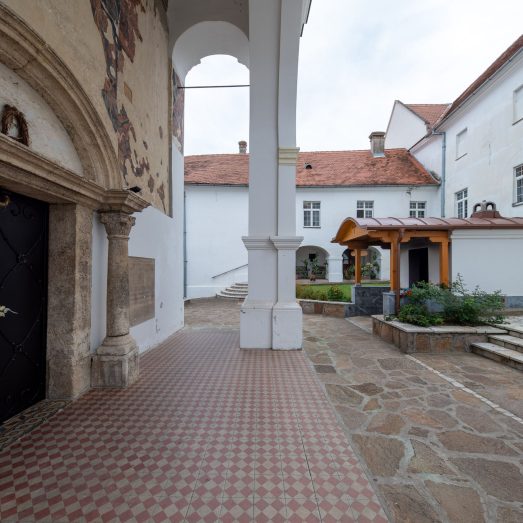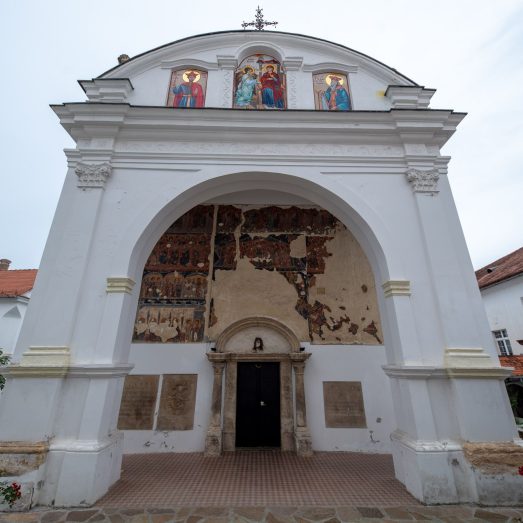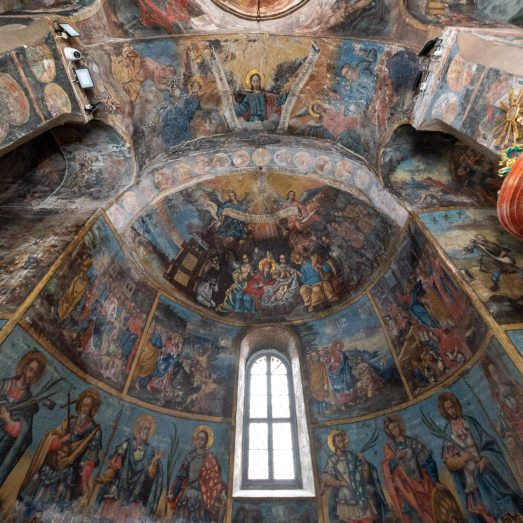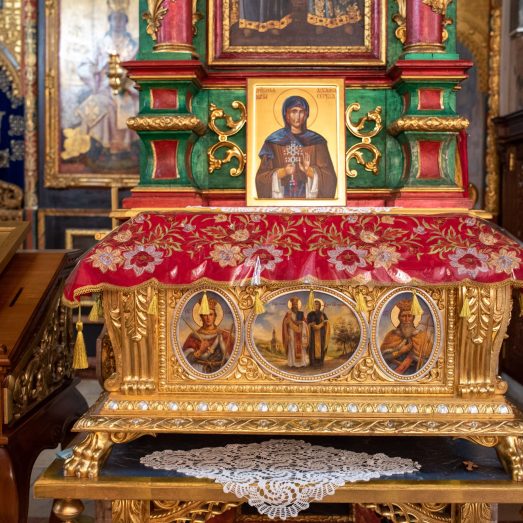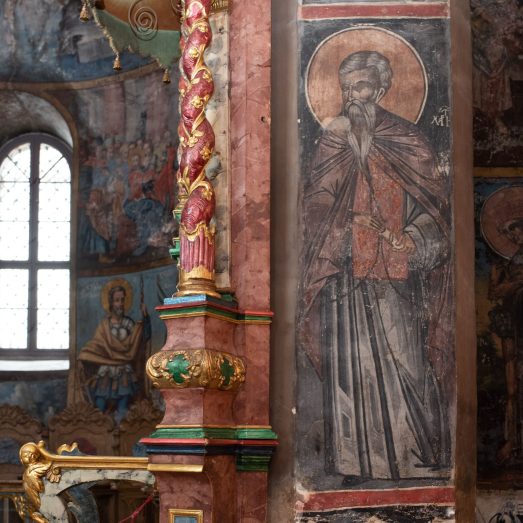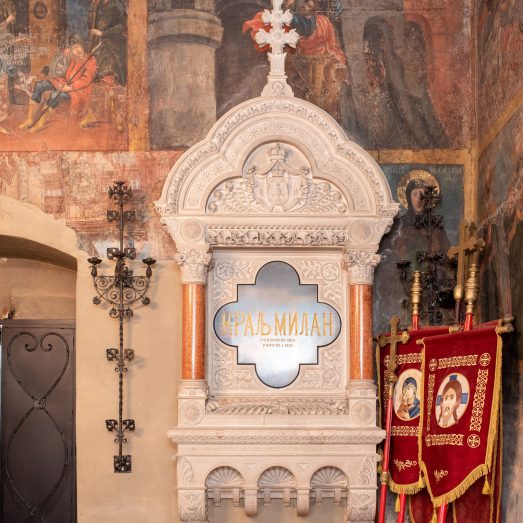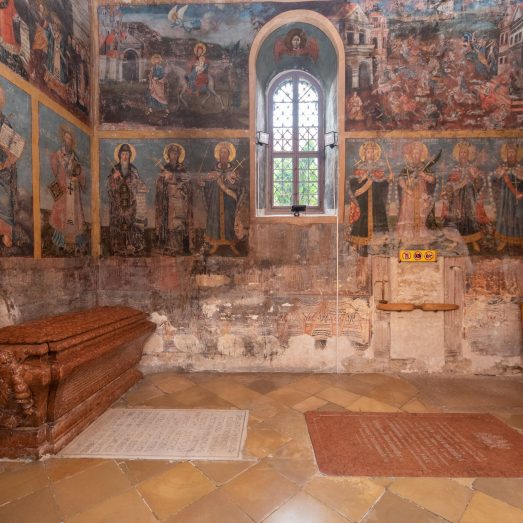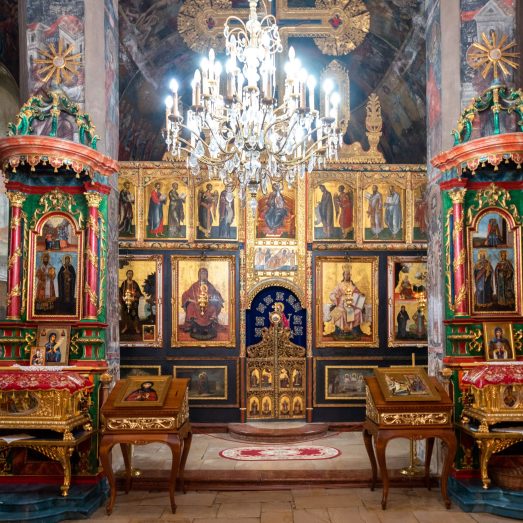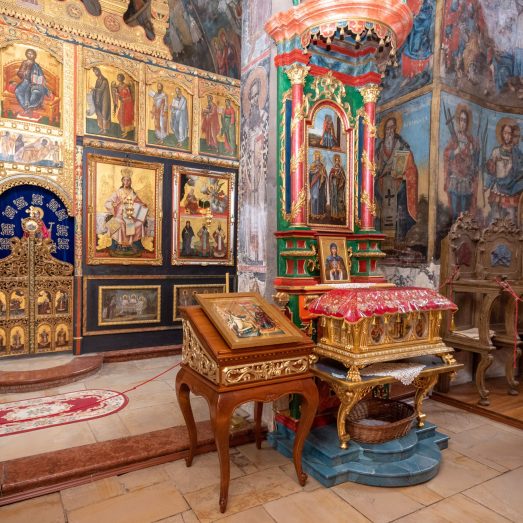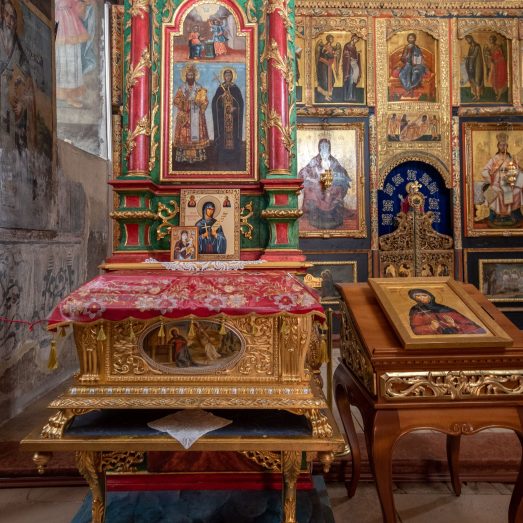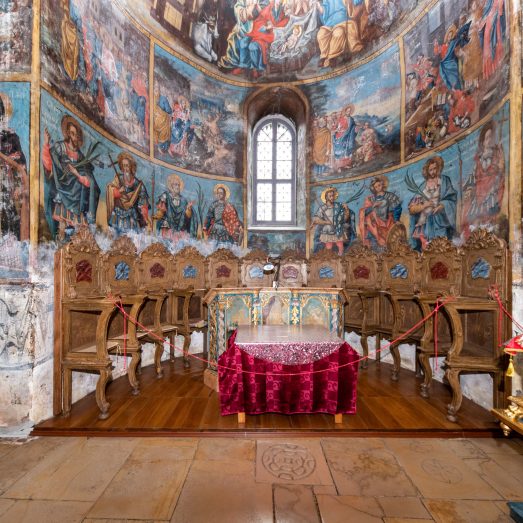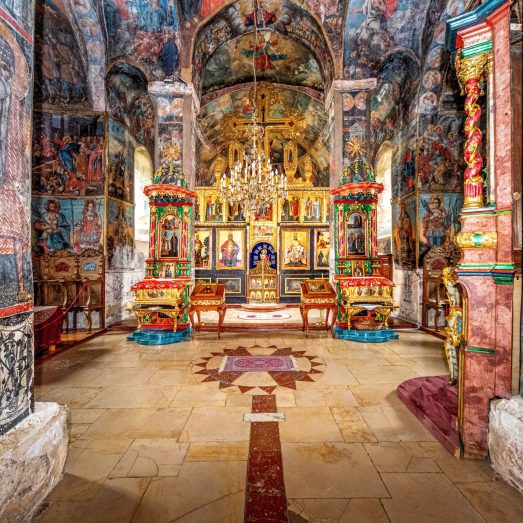The monastery church is dedicated to the Annunciation of the Virgin Mary (Blagovesti Bogorodice) (April 7)
The Krušedol Monastery was founded by Archbishop Maksim (before the monkhood – Despot Đorđe Branković) at the very beginning of the 16th century, and will thus remain recorded as the last Serbian ruler, and then a hierach, who, according to medieval custom, erected an endowment. The construction was assisted by the Vlach Duke Jovan Njagoja Basarab. The monastery was the seat of the Diocese of Srem and the mausoleum of the canonized Branković family of Srem: Despot Stefan the Blind (Stefan Slepi), his wife, Despotess Angelina and sons of bishop (archbishop) Maksim and Despot Jovan. Krušedol was an extremely wealthy monastery, which is supported by a document of the Ottomans from the second half of the 16th century. The cult of the Branković family of Srem, who were canonized for Christian virtues and the protection of the people, was cherished by the Serbian people and their mausoleum was a place of respect and pilgrimage as the most important Fruška Gora monastery. Its importance is also confirmed by the holding of church and national councils, the first after the Great Migration of the Serbs to the area of the Habsburg Monarchy at the end of the 17th century.
At the end of the 17th century, the monks of Krušedol, fleeing from the war for several years, took refuge in Szentendre with their valuables. But already at the beginning of the 18th century, after the Battle of Petrovaradin, the Ottomans, enraged by the defeat, burned down, looted the monastery and destroyed the relics of the canonized Branković family (we learned in the monastery that this destruction was not complete).
From the second decade of the 18th century, during the time of the bishop of Pécs and archimandrite of Krušedol, Nikanor Melentijević, the Krušedol Monastery was successively renovated, and its monumental appearance shone in the middle of the same century. At that time, the reconstruction of the church and the construction of the konaks surrounding it on four sides were completed, as well as the construction of the chapel of St. Maksim in the konak, bell tower and porch. The renovation and extension changed the original appearance of the monastery complex. The patrons of the reconstruction were Serbian hierarchs and wealthy citizens. In addition to its historical and architectural value, exceptional fresco painting and icons, the tombs of famous hierarchs and rulers, the monastery owned the richest treasury on Fruška Gora until the Second World War. During the Second World War, the valuables of Krušedol were looted, and a part of them was taken to Zagreb. A part of the returned valuables is today kept in the Museum of the Serbian Orthodox Church in Belgrade and will be presented to the audience in a setting that will be opened in one part of the konak.
Wall painting in the monastery church is of great value. It is a kind of exhibition that presents examples of fresco painting of medieval Serbia from the 16th century and a new style that reached its culmination in the 18th century. The older wall painting of the temple was completed in the middle of the 16th century. Its remains are visible on the pillars on which the figures of the prophet, apostles and St. Maksim (Branković) are located. On the west façade of the temple are scenes of the Last Judgment, created in the mid-17th century.
During the renovation of the church, at the beginning of the 18th century, the church was repainted. It is assumed that the painting in the narthex and altar was done by Jov Vasilijevič with associates (Vasilije Ostojić, Joakim Marković, Teodor Stefanov Gologlavac and Amvrosije Janković), and that the authors of the painting in the naos were an unknown Russian painter and Stefan Tenecki. In the first part of the narthex, we find the characters of the Nemanjić, Prince Lazar and the Branković family of Srem. It is a testimony to the connection between the cult of Nemanjić and Branković and the continuity of the idea of Serbian statehood and national identity.
The iconostasis of the Krušedol church was made in different epochs, and for the most part belongs to the time before the renovation in the 18th century. Throne icons from the 18th century are the work of Jov Vasilijevič. The archiereus’ throne was painted and donated by Dimitrije Bačević in the middle of the 18th century.
The importance of Krušedol is also demonstrated by the fact that many important figures of our history are buried in the monastery church, the mausoleum of the canonized Branković family members: Serbian Patriarchs Arsenije III Čarnojević and Arsenije IV Jovanović, Metropolitan Isaija Đaković, Archimandrite of Krušedol and Bishop of Pécs Nikanor Melentijević, Count Đorđe Branković, Duke Stefan Šupljikac, Princess Ljubica Obrenović, King Milan Obrenović and others.
TOURIST INFORMATION: The monastery can be visited during daylight hours. Decent dress is implied. On the ground floor of the konak there is a souvenir shop where a monk is always on duty.
